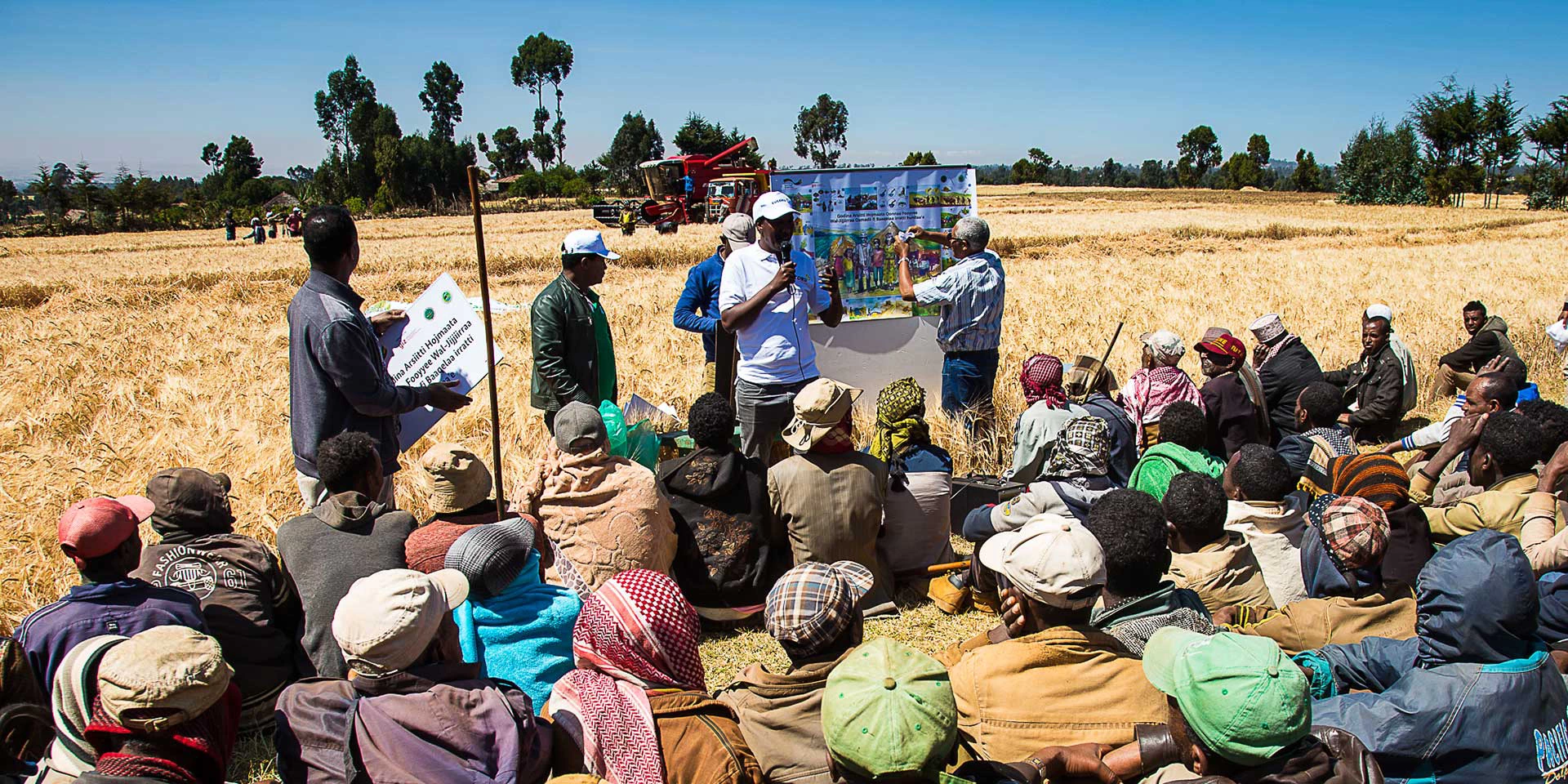Alan Johnson is a senior operations officer in IFC’s Manufacturing, Agribusiness, and Services Industry Department, based in Addis Ababa. He has worked with three IFC clients in the malt barley sector over the past four years.
By Alan Johnson
Nearly four years ago, I started working on malt barley in the context of a prospective new project with Heineken. We developed a successful advisory project focused on improving the productivity and business professionalism of around 30,000 smallholder farmers in Heineken’s barley supply chain.

Alan Johnson, Sr. Operations Officer, IFC. ©Anya Johnson
 The case for the project was strong. There was strong and growing demand for malt barley from the emerging brewing and soft drinks sector, but most malt was imported from Europe. At the same time, access to foreign exchange (to buy imports) was increasingly difficult.
The case for the project was strong. There was strong and growing demand for malt barley from the emerging brewing and soft drinks sector, but most malt was imported from Europe. At the same time, access to foreign exchange (to buy imports) was increasingly difficult.
Ethiopia is one of the few places in Africa with good agro-ecological conditions for barley as well as a barley growing history. However, local barley varieties and the prevailing cultivation techniques meant that local barley yields (at around 1.5 metric ton/hectare) were well below what was possible on farms using improved inputs and modern farming techniques.
I think the biggest success of the project was persuading farmers to adopt a new approach of more commercial farming based on a combination of contracts, a package of high-yielding seed and fertilizer, as well as new cultivation techniques such as row-planting and crop rotations. Once the first groups of farmers could show significantly improved production (and incomes) the effects of “seeing is believing” meant that the project’s “productivity package” began to sell itself.
And that led to another important success: The improved yields have meant greater food security for the farmers, who also have discovered other nutritious uses for the malt barley (see below.)
So how did we make it work? Three things stand out:
1. You need to prepare the ground—working "Upstream"—to attract investment.
Although it was not planned at the time, the "Upstream" advisory work building the productivity and business professionalism of 30,000 smallholder farmers in Heineken’s barley supply chain in Ethiopia provided a “proof of concept.” It led to subsequent investment and advisory projects with both Soufflet and Habesha.
The work with the first project introduced improved barley seed varieties and farmer training program as part of a holistic “farmer professionalism” package. Substantial yield increases (up to 5 MT/ha) established a solid technical base for a more modern barley sector.
The productivity gains demonstrated that good returns to farmers were achievable, which encouraged interest from additional farmers outside the project area. Finally, although we are not there yet, the overall ambition is to modernize and transform the entire Ethiopian barley sector so that Ethiopia becomes a regionally price-competitive malt barley producer. This, in turn, will draw in more investors.
2. It takes a village to build a project
As a project designer, it is always good to keep the planned interventions as simple as possible. However, as we move to sector or “landscape”-focused challenges, there are many new variables (seed licenses, barley pricing, farmer finance) that fall outside the traditional project manager “span of control.”
That means the project needs to engage with a wider range of outside parties to achieve its goals. In this example, we were able to have success because we held regular regional multi-stakeholder meetings. This included federal and regional government agencies, the Ministry of Agriculture, Ethiopia Agricultural Transformation Agency (ATA), Ethiopian Institute of Agricultural Research, and the Oromia Seed Enterprise, universities, non-profit organizations such as EUCORD, Agriterra and Self-Help Africa as well as the participating businesses—Heineken, Habesha, and Soufflet.
The project was developed in partnership with the Government of the Netherlands.
3. Projects can have other benefits—make sure you track them
One of the unexpected benefits of the projects has been a large increase in local food uses for malt barley. We discovered that malt barley makes good partial substitute for the more expensive teff grain in Ethiopia’s famous staple injera (a sourdough-risen flatbread, traditionally made from teff flour, that is central to dining in Ethiopia and Eritrea).
Our monitoring surveys subsequently confirmed that the domestic food uses of the incremental barley production exceeded 60 percent—well above the industrial processing uses. It means we have created a food security project as well as a supply chain development project. This additional effect has helped to further increase the popularity of malt barley among farmers and accelerate the adoption of improved, higher yielding seed varieties and cultivation practices.
Published in February 2020
